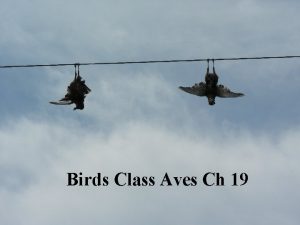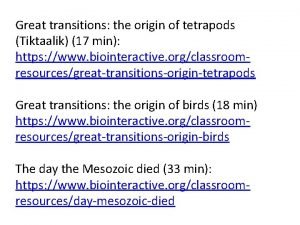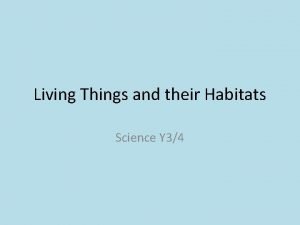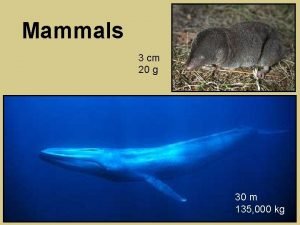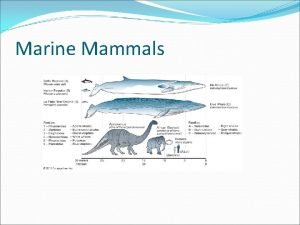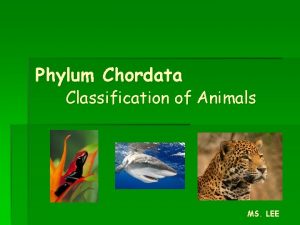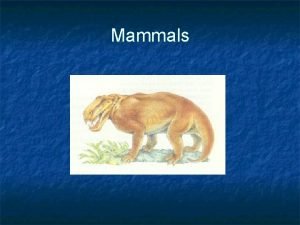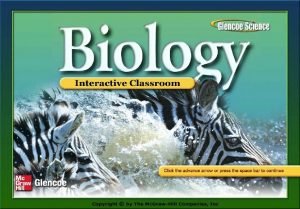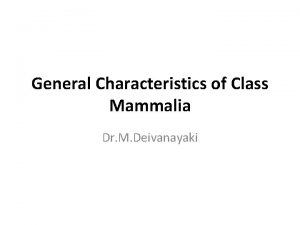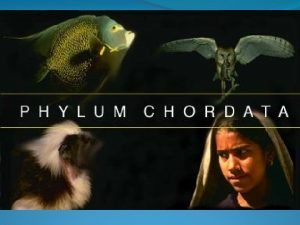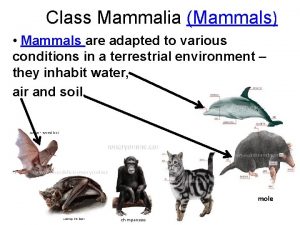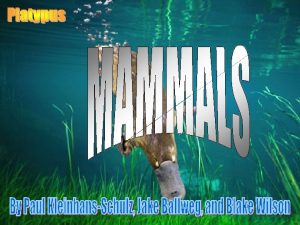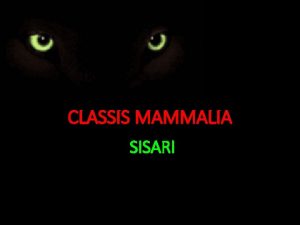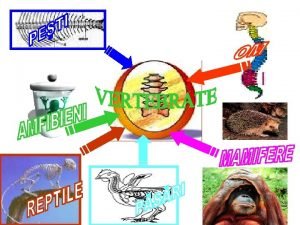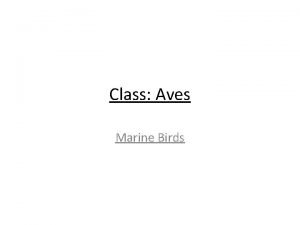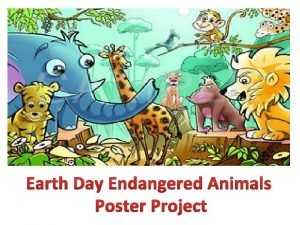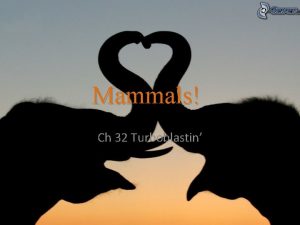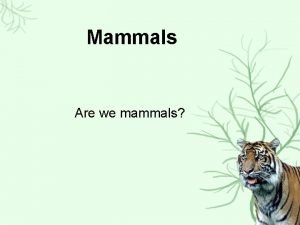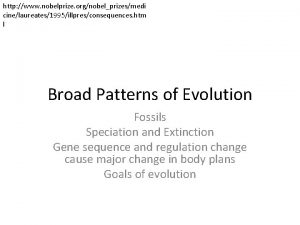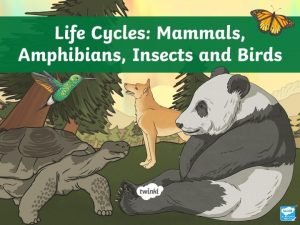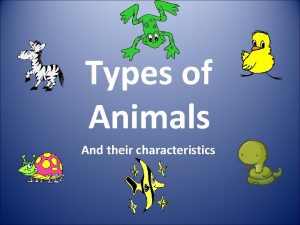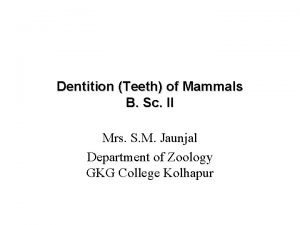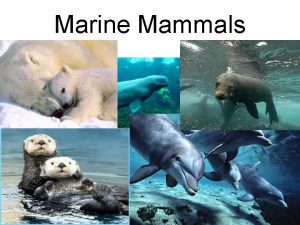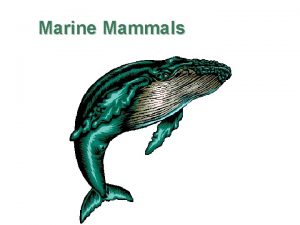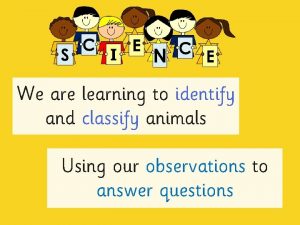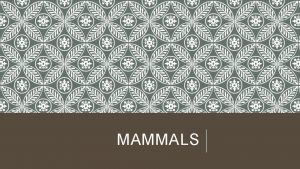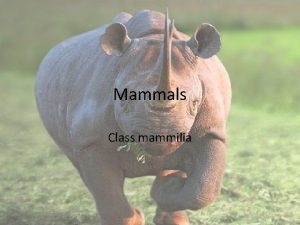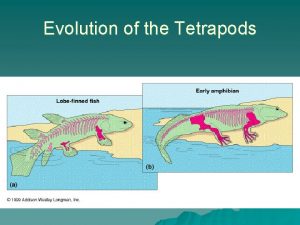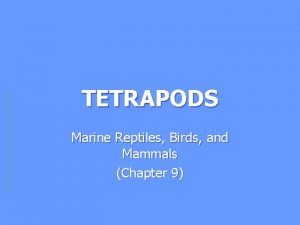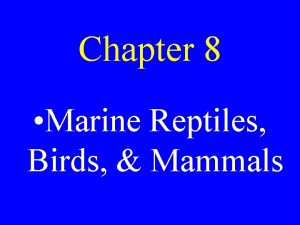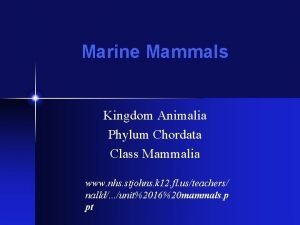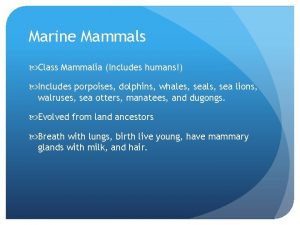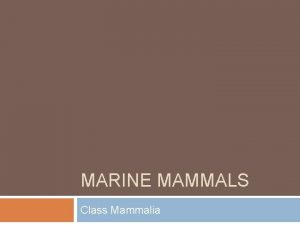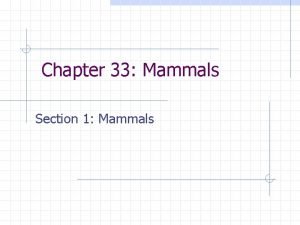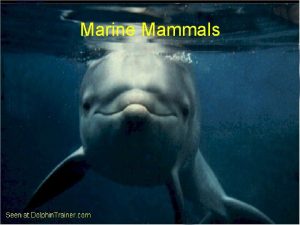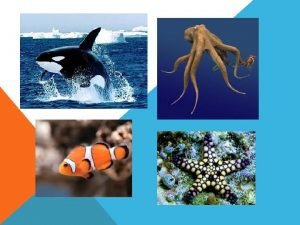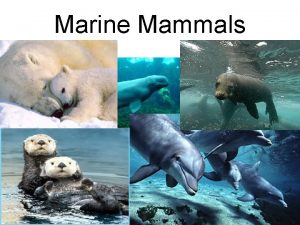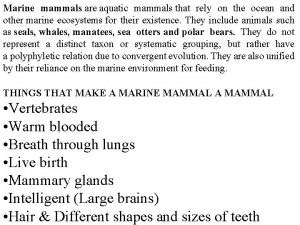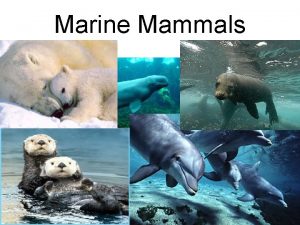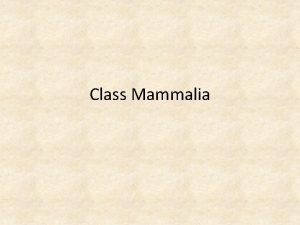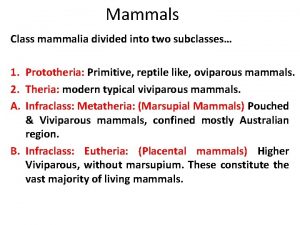Marine Mammals Class Mammalia Class Mammalia Tetrapods with































- Slides: 31

Marine Mammals Class Mammalia

Class Mammalia • Tetrapods with young nourished from mammary glands. • Hair on their body. • Endothermic. • Viviparous

Order Sirenia: Manatees and Dugongs • 1 species of dugong • 3 species of manatees

Florida Manatee • • Endangered Herbivore Migrate in Winter Inhabit tropical waters

Order Carnivora • • • Well-developed claws. Strong facial musculature Specialized teeth: canines and incisors.

Suborder Pinnipedia: Sea Lions, Seals and the Walrus

Family Otariidae: Sea Lions

Family Phocidae: Seals

Comparison of Sea lions and Seals Sea Lions (Otariids) Seals (Phocids) • • External ears Long neck Performs in shows Use front flippers to swim • Can pull hind flipper under body to walk on land • Claws ¾ to end of flipper No external ears Short neck Do not perform Use back flippers to swim • Can’t rotate hind flippers • Claws at end of flippers

Family Odobenidae: Walrus • Both males and females have tusks. • Use vibrissae (whiskers) to feed.

Family Mustelidae: Sea Otter Two North American Subspecies 1. The Alaska / Northern 2. The California / Southern

Sea Otter Fur • Over 1 million hairs/in 2 (Humans have 20, 000 hairs on their entire head!) • Need thick fur because they have NO blubber • Oil on hair repels water

Oil Spills • Oil covers fur and otters die of exposure • When otters attempt to clean their fur, they ingest the oil and die.

Diet • Eat invertebrates (urchins, abalone, crabs). • Use tools.


Polar Bears

Family Ursidae • Partially aquatic bears. • Inhabit arctic sea ice, water islands & coastlines.

Adaptations to the Arctic • Small ears which help conserve body heat. • Hind limbs are longer than forelimbs • 12’’ paws – act like snowshoes • Non-retractable claw (to grip ice) • Thick fur that is oily and water repellent • Skin is black which enables the bear to absorb sunlight energy to warm its body. • Have 4 inches of blubber

• No natural predators as adults • Threatened species protected under MMPA (Marine Mammal Protection Act)

Order Cetacea

• • Sub. Order Mysticeti (Baleen Whales) Largest: Blue 2 nd largest: Fin Humpback (sings) http: //www. oceanmammalinst. o rg/songs/hmpback 3. wav • 2 Blowholes Minke Whale Humpback

Baleen Plates • Used for filter feeding • Made of keratin like hair and nails

Rorqual • Throat grooves • These whales have shorter baleen plates • Expand capacity of mouth

Diving Adaptations • Have 2 x the RBC’s, and 9 x the myoglobin (than humans) • Countercurrent heat exchange system: Veins surround arteries; heat from blood in arteries is transferred to venous blood. • Mammalian diving reflexblood is shunted away from extremities to vital organs.

Gray Whale Undertakes the longest migration (11, 000 miles) •

Sub. Order Odontoceti • Examples: Sperm, Orca, Dolphins, Porpoises, Narwhal & Beluga

• • • Found in fresh and salt water One Blowhole No sense of smell in toothed whales

Whale Anatomy • Female whales have a genital slit and 2 mammary slits. • Males have 1 genital slit.

• Largest member of Dolphin family is Orca • Largest toothed whale is the Sperm Whale • Fastest is Dall’s Porpoise: 34 m. p. h. Sperm Whale Orca Dall’s Porpoise

Cooperative Hunting • Includes orcas, bottlenose dolphins and humpbacks • Hunt in packs like wolves • Humpbacks use bubble netting to surround their prey

Echolocation • Enables toothed whales to locate and discriminate objects by listening for echoes • Uses organ called a melon which contains fats • Acts as an acoustical lens to focus sound waves out to H 2 O • Sound travels 4 x faster in H 2 O than in air. • Lower jaw bones = sound reception
 Birds - class of tetrapods
Birds - class of tetrapods Great transitions the origin of tetrapods
Great transitions the origin of tetrapods Vertebrates animals
Vertebrates animals Mammals and non mammals
Mammals and non mammals Mammals characteristics
Mammals characteristics Characteristics of marine mammals
Characteristics of marine mammals Phylum chordata mammalia
Phylum chordata mammalia Chordata classification
Chordata classification Censa.edu.br
Censa.edu.br Nn small
Nn small Chapter 30 section 1 mammalian characteristics answer key
Chapter 30 section 1 mammalian characteristics answer key Class mammalia characteristics
Class mammalia characteristics Class mammalia characteristics
Class mammalia characteristics Odd-toed ungulates
Odd-toed ungulates Subclasses of mammalia
Subclasses of mammalia Classis mammalia
Classis mammalia Animalia chordata
Animalia chordata Marine birds class
Marine birds class Endangered animals poster project
Endangered animals poster project Some bacteria benefit mammals by helping with
Some bacteria benefit mammals by helping with Monetremes
Monetremes We are mammals
We are mammals Introduction of mammals
Introduction of mammals Mammal metamorphosis
Mammal metamorphosis Light can travels from the sun to the earth
Light can travels from the sun to the earth Types of animals and their characteristics
Types of animals and their characteristics Omnivore teeth structure
Omnivore teeth structure Excretory organs in mammals
Excretory organs in mammals Mammals
Mammals Countercurrent exchange
Countercurrent exchange Alimentary canal of mammals
Alimentary canal of mammals Mammals
Mammals
